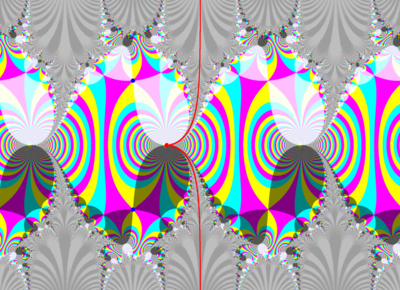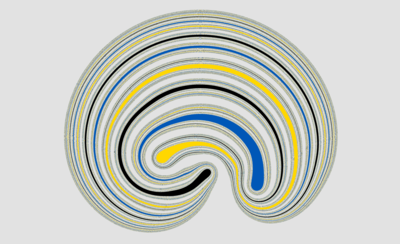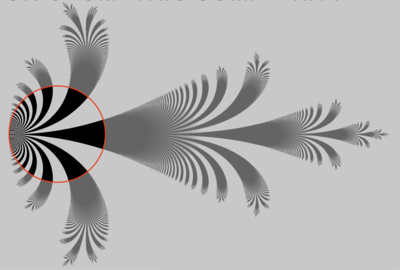Research
I work in Complex Dynamics. More precisely, I study the iteration of transcendental entire (or meromorphic) functions. In my PhD thesis, under the supervision of Prof Phil Rippon and Prof Gwyneth Stallard at The Open University, I studied the escaping set of transcendental self-maps of the punctured plane. An example of such maps is the complex Arnold standard family.
Currently, I am working on the topology and dynamics of wandering domains (and their boundaries). In a recent work with Lasse Rempe and James Waterman, we proved that wandering domains of entire functions may form Lakes of Wada and that escaping wandering domains may have non-escaping points on their boundaries (known as maverick points). We also constructed a counterexample to Eremenko’s conjecture concerning the bounded components of the escaping set of transcendental entire functions.
I am also interested in other subjects such as the Hausdorff dimension and computational complexity of Julia sets and several subsets thereof, which are two different ways of measuring how complicated Julia sets can be.

Iteration of transcendental self-maps of the punctured plane
A transcendental self-map of the punctured plane $\mathbb{C}^*=\mathbb{C}\setminus\{0\}$ is a holomorphic function from $\C^*$ to itself for which both zero and infinity are essential singularities. Such functions arise in a natural way when one studies the complexification of analytic circle maps. Such functions share many properties with transcendental entire functions but at the same time have some differences that, in my opinion, make them an interesting class of functions to study.
The complex Arnold standard family is the most famous family of transcendental self-maps of the punctured plane. It consists of perturbations of a rotation on the circle. Arnold used this family to study the dependence of the rotation number of an orbit with respect to the parameters. This gave rise to the so-called Arnold tongues, which are regions of the parameter space where this rotation number is constant. This family plays an important role beyond complex dynamics as it is often used as a model for phase-locking phenomena in dynamical systems. In a work in progress with Mitsuhiro Shishikura, we study the complex version of the Arnold tongues, and many questions remain open about such sets.

Wandering domains of transcendental entire functions
The Fatou set (also known as the stable set) of a meromorphic function is the largest open set on which the family of iterates of the function is defined and normal. A wandering domain is a connected component of the Fatou set that does not become periodic eventually; in other words, they never return to a place where they have been before. By a result of Sullivan, polynomials and rational functions do not have wandering domains, but Baker proved that transcendental entire functions do. In a recent joint paper with Lasse Rempe and James Waterman we proved that wandering domains can be quite interesting from both a topological and dynamical point of view:
(1) wandering domains can form Lakes of Wada, that is, infinitely many disjoint wandering domains can have the same boundary;
(2) escaping wandering domains can have non-escaping points in the boundary.
Many questions remain open about these elusive Fatou components.

Dimensions and complexity of Julia sets and subsets thereof
For a transcendental function, the Julia set (where the chaotic behaviour takes place) is a fractal set. Thus, it is a very classical question to study their fractal dimension: the most well-studied is the Hausdorff dimension, but one can also look at the packing dimension, or other concepts. One of the big recent results in transcendental dynamics (by Bishop) is that the Julia set of a transcendental entire function can have Hausdorff dimension 1, which is the smallest possible value. In a couple of ongoing collaborations, we study the dimensions of different subsets of the Julia set: boundaries of basins of attraction, and hairs (also known as dynamic rays). One question that I find interesting is to study the dimension of the set of points that escape but are not fast escaping (compared to the iterates of the maximum modulus).
A different way to measure how complicated a Julia set can be is to look at its computational complexity. In complex dynamics, we often draw pictures of Julia sets by asking a computer to iterate a collection of points (one for each pixel) for a finite number of times and predict whether it will escape or not. However, if the function is transcendental, due to Picard's theorem this is not an easy task. Roughly speaking, a set is computable (e.g. in polynomial time), if a computer can produce arbitrarily good approximations of the set in a given time that depends only on the accuracy. In a joint work with Artem Dudko, we study the computational complexity of Julia sets of functions in the exponential family. It would be interesting to study the complexity of Julia sets of other classes of transcendental functions.